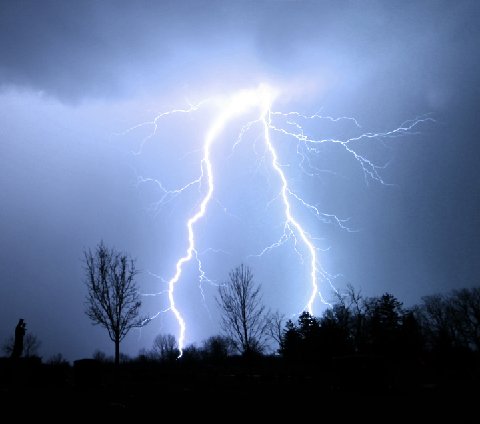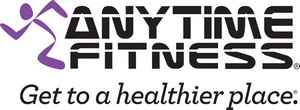With the potential for weather, or other natural disasters, Northfield Center Trustee Paul Buescher has prepared an Emergency and Disaster Guide. These are guidelines you should follow before an emergency occurs so you are ready! Please read, copy and clip and save. It could save you, or your loved ones life. Thanks to Paul Buescher!
EMERGENCY & DISASTER PREPAREDNESS GUIDE
By Paul G. Buescher
Since 2002, our Northern Summit County communities have endured many emergency and disaster events that caught most by surprise. In 2002, a tornado ripped neighborhoods to shreds and the following year on August 14th we were plunged into darkness during the greatest power outage in U.S. history. This power outage also caused over 1.5 million residents and businesses on the Cleveland water system to lose water for several days!
In June 2006, we were hit with torrential rains and flooding with extended power outages. The same happened in January of 2007. The remnants of Hurricane Ike struck our neighborhoods in September 2008, that caused wide spread power outages and road closures. In fact, each year beginning in 2006 through 2014 saw severe flooding and numerous power outages throughout our area. There were also many water main breaks that caused the loss of water for hundreds of residents and businesses throughout those same years. And now, just as I am updating this guide, many of our residents are without power due to the hellacious winds that hit us on March 8th. Their power might not be restored for over 24 to 48 hours and the temperatures are predicted to plunge into the 20’s and teens!
This uncertain world that we share is becoming even more uncertain nearly every day. Threats to the condition and availability of the necessities of life are becoming more widespread and pronounced. The cost and sometimes the very availability of nearly every commodity is fluctuating wildly and will continue due to political unrest, financial volatility and a myriad of natural and manmade causes. The frequency and severity of natural disasters, infrastructure breakdowns, and the threat of war, terrorism and social breakdowns is increasing at an alarming rate. Historically speaking, disasters, whether they’re manmade or natural, usually strike in the most unexpected areas when people are the least prepared.
Consider this simple question – If a disaster struck your community this very minute and for at least 72 hours, you were unable to buy or otherwise obtain safe drinking water, food, medicine, fuel, etc., would you be prepared? Not surprisingly, the vast majority of people would have to honestly answer this question with a NO!
It was just a few years ago, when over 500,000 people in the Toledo, Ohio and surrounding areas were under a water emergency due to toxic algae from Lake Erie. Gov. John Kasich declared a STATE OF EMERGENCY! All bottled water had been sold out, businesses were closed and the National Guard was called out! And at the same time, residents of Mantua, Ohio received a boil alert (for three days) due to a broken water main.
Right here in northern Summit County (Ohio) we face a dangerous threat each day. On the average, there are 72 trains that pass through Hudson, Boston Heights, Northfield Center, and Macedonia every 24-hours. The tank cars on those tracks can carry up to 33,000 gallons of an array of fuels and other dangerous chemicals. As Ohio produces more crude oil, especially volatile Bakken crude, the number of tankers is increasing and the number of accidents and derailments occurring across the country has had fatal results.
Our perceptions of safety and well-being are based on the belief that during trying times, our local, state and federal governments will take care of us. However, history shows, along with our own government statistics, that help is usually very slow in coming. Hurricane “Super storm” Sandy and Hurricane Katrina are just a couple of vivid past examples. In just the past fifteen years or so we experienced the unexpected and dangerous local disasters that I already mentioned.
Despite my publishing this guide on a nearly yearly basis and after each disaster that we encounter, most folks have not even taken the most basic steps to prepare themselves and their families for these emergency events.
I have studied emergency preparedness for decades and although I’ve become a self-taught expert in the field even I am still learning. I am a normal family man who has taken a common sense, easy, cost effective and proven approach towards survivability and self-preparedness for my family and friends. I want to share with you what I have learned over the years in the hope that some of you might also learn and attain a comfortable level of emergency preparedness for you and your families.
Natural and manmade emergencies and disasters can strike at any time and affect areas ranging from small neighborhoods to entire counties and beyond. Most people living in our region have never experienced a true emergency where the basic necessities of life were in short supply or nonexistent. This could include water, food, shelter, medicine, utilities, fuel, communications and help from local, state and federal agencies, which could be many days, weeks or even months away.
Depending on the nature and severity of such emergencies, there is no way for anyone to predict when outside assistance will arrive. Our own government statistics show that in the aftermath of many disasters, it usually requires various agencies at least three days (72-hours) to begin deploying emergency aid. The Federal Emergency Management Agency (FEMA) recommends that every household maintain a 72-Hour emergency kit for each member of the household. Each kit should be ready at hand and contain enough of the following for THREE DAYS:
72-HOUR EMERGENCY KIT
First Aid Kit
Water Pouches or other filled containers and a portable straw filter
Change of Clothes
High Energy Food Bars or MRE’s (Meals Ready to Eat)
Personal Hygiene Items (toilet paper, tooth brush & paste, soap, etc.)
Flashlight & Extra Batteries
Lighter or Matches
AM & FM Radio
Cash & Coins
Copies of Important Documents & ID
These items are very minimal and should be expanded to suit each family member’s foreseeable needs in an emergency situation. Thought should also be given to carrying these or similar kits in your vehicle especially during long trips.
Serious thought should be given to your important papers, documents and ID’s, especially insurance policies. These should be stored in a waterproof bag with ID’s for ALL family members included. And in case of separation, each family member should have copies of his/her own ID’s in their own kit.
The above represents the absolute MINIMUM that any family or individual should consider for their overall emergency preparedness plan. In fact, recent events have clearly shown that a 72-hour emergency kit has proven to be insufficient but then again, it’s better than nothing. A more practical plan involves one week and beyond.
ONE WEEK AND BEYOND
No matter where you live or what you live in, an emergency preparedness plan is essential and possible. Such a plan should involve food and water storage, a well-maintained home, medical supplies, personal items including clothing (for all seasons) hygiene supplies, tools, household maintenance items, alternative power sources (i.e., generator, solar, etc.), alternative heating and cooking fuels along with security and safety plans.
Without expounding on any religious ideology, I like the Mormon’s philosophy of storing a full year’s supply of everything. While most people have neither the time, interest or funding available for a plan of this size, I find the basic concept to be not only sensible but also very prudent. Whether you consider a one-week or one month and beyond plan, the basics are the same – you are investing in the future. You are simply buying the same supplies ahead of time that you would’ve purchased anyway. By rotating your stock (first in, first out) nothing will spoil and you will always have on hand what you need when you need it!
This is how everyone lived just a few short decades ago but today’s lifestyles have made us more dependent on outside sources for our immediate and everyday needs than at any other time in our history. In a disaster situation, reliance on external sources for these needs could prove to be an emergency in and of itself for you and your family. Those sources may not be there when you need them the most. It should be noted that most grocery stores have only a three-day supply of food on hand, which could be wiped out in a few hours or less prior to or immediately after an emergency situation!
PETS
Your preparedness plans should also include your pets. After all, aren’t they part of your family? Your pets should always have an ID on them and it is highly suggested that they have microchips. In addition to stocking up extra food (preferably the dry type to last longer) and medications, you should also consider toys and treats because just like people, animals can become upset during disasters. In case you become separated from your pet(s) during a disaster, having photographs of them could help to reunite you with them.
WATER
Water and food are the two most important elements in any emergency preparedness plan because without them, nothing else matters! Any disaster or emergency situation can disrupt access to one or both. You can survive without food for many days but without safe drinking water, you will become very ill and could die within days.
We are fortunate to live in an area where water is quite plentiful but not necessarily potable (drinkable). Therefore, if you have the means and knowledge to filter and treat water, a large storage plan is not necessary but at least one gallon per family member per day should be included in all preparedness plans. Properly cleaned food-grade plastic jugs such as two-liter pop bottles are ideal for storing small amounts of water. Do not use old milk jugs or chemical containers since the plastic may be permanently contaminated with bacterial or chemical residue.
In the event you need water and have not stored any, there are alternatives. You will find that the plumbing in your house, including the pipes, water heater and toilet tank(s) (not the bowls) could hold up to 70 gallons or more of perfectly safe drinking water. Toilet tanks should not be considered if you use in-tank cleaner/deodorizer tablets!
Surface water in streams, ditches, ponds, lakes and rain water collected in rain barrels can easily be treated for drinking and cooking purposes through boiling, filtration or chemicals. Filter straws, pump filters and gravity filters are readily available on line or at most outdoor and camping outlets. I HIGHLY RECOMMEND a “Big Berkey” filter (www.bigberkeywaterfilters.com ) A bottle of regular (unscented and non-whitening) Clorox bleach containing at least 6% Sodium Hypochlorite can treat hundreds of gallons of water considering that ½ teaspoon will treat five gallons of water after standing for 30 minutes. Just a quick note on filters – Those screw on kitchen sink filters only remove large particles and offensive colors and odors. They do NOT remove bacteria, heavy metals, etc.
A water crisis can occur in our area even though no local disaster is occurring. During the massive power outage on August 14, 2003, the news media was warning that the Cleveland, Ohio water system only had a two-hour reserve of water because the pumps could not work without power. Cleveland services most of northern Summit County! When that reserve ran out, the water flow stopped for over 1.5 million people. No drinking water and no toilet flushing water. With adequate warning, bathtubs and sinks can be filled to supplement your drinking and washing water and provide for toilet flushing. The latter is something most may not think about right away but believe me, it won’t take long before lack of preparedness in this area becomes a very noticeable problem.
Water shortages and the quality of water continue to be a concern due to drought conditions, contamination and infrastructure failures. Thousands of people in Toledo saw their water contaminated last year from toxic algae and in January of this year, Flint Michigan is suffering from lead contamination. And just this week, right here in Ohio, the town of Sebring made the news with lead and copper contaminated water!
The frequency of major water main breaks has risen dramatically in just the past few years due to the age of the pipes and the escalating demand for water. Experts won’t admit it but the truth of the matter is that these problems will continue to rise and get worse as time goes on!
FOOD
The variety of food available for storing is nothing short of astounding. There are cans, jars, bottles, sealed packages, dehydrated, freeze-dried, irradiated, MRE’s (Meals Ready to Eat) – you name it, it’s available. Most canned and jarred foods have a storage (shelf) life of 48 to 60 months if stored away from heat, light and moisture. MRE’s can last 7 to 10 years and beyond under similar conditions. Although somewhat pricey, Freeze Dried food is the best storable food available. This food generally comes in #10 cans and if properly stored, can last from 25 to 30 years. Preparation is the best part – Add boiling water, let sit for ten minutes, and then eat! Meals like Chili Mac with Beef, Chicken A La King, Lasagna with Meat Sauce, Turkey Tetrazzini and a host of other meals sounds a lot better than the old Pork-n-beans stand by!
Long term storage foods are not only excellent for emergency and disaster preparedness; they can also be considered as a prudent economical investment. Food prices have risen dramatically in the past couple of years and due to the recent droughts and the diversion of corn to ethanol alcohol production, these prices are predicted to continue rising. Even with the high cost of some of these long-term storage foods, your peace of mind and your savings over time will be quite evident!
When considering what kinds of food to store, be sure to include multiple vitamin supplements and include ALL members of your family in the planning stages. Make it a family affair.
ALTERNATE ELECTRICAL POWER
We’ve all experienced power failures of varying durations and we are all aware of the great inconvenience that they cause. Imagine the hardships and problems that a prolonged power outage of several days or more would cause. Think about this occurring during the cold winter months! Remember, without power your electric heater is useless and your natural gas furnace blower will be inoperative!
In addition to candles, lanterns, flashlights and extra batteries, there are other alternatives for you to choose from but unlike the subjects that we’ve discussed so far, these will involve extra costs.
The easiest, most common and readily available equipment to power a home when commercial service fails is a portable generator. These can be purchased at most home improvement stores and mail order sources for prices ranging from $350 to $2500 and up. The prices are based on the wattage capacity, which usually start at 1,000 watts and work up to 5,000 – 8,000 and 10,000 watts and up. A qualified electrician can show you how to calculate for the proper size and should be hired to make the proper electrical connections to your service panel.
The advantages of a generator system are that they are readily available, easy to operate and can handle heavy loads. A generator’s disadvantages are that they are noisy, most can only be run in cycles (not continuously), they require mechanical maintenance and require fuel storage and the availability of that fuel. Remember that gas stations cannot pump gas during power outages. Cars lined up for miles around the few stations that had power during the historical power outage on August 14, 2003 and during Super storm Sandy.
During all widespread power outages generators immediately disappear from the store shelves. With that thought in mind remember this …. It’s better to prepare six months too early rather than one day too late!
Solar power is a much more complicated system to install yet its installation cost is comparable to the higher end generator system. However, once in place, a solar system’s operating costs are nearly zero and maintenance is negligible. Additionally, a solar system can be utilized all year long to supplement your energy needs thus lowering your monthly electric bill.
A solar system requires an array of photovoltaic (solar) panels to be mounted on a southerly facing ground mount or rooftop. These panels then charge a bank of 12-volt DC batteries during daylight hours. An inverter converts the 12-volts DC to a standard household current of 115-volts AC. This amounts to FREE energy from the sun! What happens on cloudy days you ask? Today’s solar panels are very efficient and only require ambient light to produce their minimum rated power.
I designed and built a solar system that currently provides 60% of my household needs and am very pleased and comfortable with its performance. There are many others here in Summit County who have helped each other build nearly identical systems. This is the wave of the future and the ultimate in emergency preparedness and self-sufficiency for power needs. I also utilize a 6,250-watt generator with a 220-volt output wired into my home’s service panel. This alone is enough to power my entire home and also charges the solar batteries if they need it. I call this prudent redundancy!
I am obviously a strong advocate of backup power and have made a substantial investment in my systems. I am often asked how long it would take for my solar system to pay for itself. Prior to July 22, 2003, my answer was about seven years or so. After July 22nd, my answer was PAID IN FULL. On that date our area was hit by torrential rains, flooding and power outages. My power was out all night and well into the following day. My solar system provided continuous power for my two large sump pumps that were running every two minutes due to the heavily saturated ground. The alternative would have been some very serious and costly flooding damage.
MEDICAL NEEDS
One very important and often overlooked consideration for an emergency preparation plan is medical supplies. In addition to standard first aid components, careful thought should be given to over the counter remedies and prescription drugs.
Treatments for nausea, diarrhea, sinus, pain, allergies, etc., should be high on your over the counter purchase priorities. If you are on prescribed medications, talk to your doctor about your preparedness plan to see if he/she will cooperate by allowing you to stock up ahead of time. This would also be a good time to ask if he/she would be willing to prescribe a wide spectrum antibiotic that you could add to your emergency medications.
Once you obtain your needed medications keep them in their original containers and store them in a cool, dark and dry location and keep them out of reach of children. Also, watch the expiration dates and rotate them using the first in, first out principal. You should also know that our government recently conducted a study on the expiration dates of stockpiled medications for the military. The study found that most prescription medications would last and be effective for years beyond their expiration dates. Never throw away unused portions of prescription medications. Store them for future emergency needs.
Remember that these are all items that should already be in your home. The only thing different in an emergency preparedness plan is to make sure you have an adequate supply for an extended period of time.
FUEL STORAGE
Gasoline and diesel fuels sold today deteriorate at a much faster rate than they did twenty years ago. This is primarily due to the EPA’s ‘clean fuel’ mandate, which includes oxygenated additives. The problem with storing this fuel is that it ‘gunks up’ and deteriorates after only six months or less. To overcome this storage problem, you need to add a fuel stabilizer. These stabilizers are sold in most stores that sell lawn-mowing equipment and can be found under the brand names, “Sta-Bil”, “Briggs & Stranton Fuel Stabilizer” and “PRI Gas Preserver.” These additives will keep fuel fresh for about two years. The PRI preserver however, will stabilize your fuel for ten years! This brand is sold on the Internet as PRI-G (gasoline) and PRI-D (Diesel and Kerosene). My friends and I have used PRI and highly recommend it. Remember however, that you should always start with fresh fuel.
There are some very important gas storage ‘rules’ you need to follow. All fuels should be stored in proper and safe containers and should NEVER be stored inside your house. ‘Legal Beagles’ should also check their state and local laws and their insurance for permissible storage.
Another very important point to consider is to keep your vehicle(s) as full as possible at all times. At the very least, never let your gas gauge go below half. During the August 14th blackout and during Super storm Sandy, things began to get out of hand at the few stations with power and able to pump. They also ran out of their supplies very quickly!
There is a new product available that you can safely carry in your vehicle or store in your home that is actually a gasoline substitute for emergencies when you run out of fuel. It’s pricey but it DOES work. The product is called “Get Spare Fuel” www.getsparefuel.com and comes in half-gallon plastic containers with 10+ years of shelf life.
SECURITY AND PROTECTION
During a severe and widespread disaster situation, provisions will be in short supply or non-existent to those who have not prepared. The majority of people will need and want what you have and if they know you have it and they become desperate enough, they will attempt to take it from you.
To prevent this nightmarish situation from occurring, it is imperative that you and your family maintain a low profile. Do not tell others of your plans unless you are prepared to share your supplies. In the aftermath of a disaster, keep all garbage containing discarded food packaging (i.e., cans, jars, wrappers, etc.) and other provision packaging out of sight from others. Why advertise and invite trouble?
The remaining element of the security and protection phase of our emergency preparedness plan involves the most sensitive subject yet discussed – firearms. You will not find firearms recommended much less discussed, in any official government preparation plans yet every private expert in the field discusses the subject and so shall we.
I highly recommend that every household include in its emergency preparedness plan at least one 12-gauge shotgun and one quality made 9mm, 45 cal or .357 magnum handgun and a good quantity of ammunition. My personal philosophy regarding firearm ownership is simple. I would rather have them and not need them as opposed to needing them and not having them! Your local law enforcement may not be available to help protect you and your family – They may not even exist at all. Think about that possibility very carefully!
Firearm ownership is an awesome responsibility and involves a very personal decision. Child safety and proper training are all thoughts that should be given to firearm ownership and handling. Consideration should also be given to obtaining a concealed carry license in the event that you have to leave your home during a crisis. One thing to remember is the fact that any emergency preparedness plan MUST include self-protection that involves firearm ownership. If you do not believe in firearm ownership, then you might as well stop reading this and delete it now because you will NEVER be properly prepared! To put it bluntly, you’re stupid if you don’t!
During the past several years ammunition prices have skyrocketed and availability has wildly fluctuated for all popular calibers, especially .22 Long Rifle, which is the most popular caliber in the United States. Most of the recent shortages have been attributed to the Federal government purchasing Billions of rounds of center-fire pistol and rifle rounds. Many speculate that this is due to the expected civil unrest in this country. These shortages and price hikes will continue to escalate because our government, due to environmental regulations, caused this country’s last lead smelter to shut down. Hoarding of all types of lead, especially used wheel weights is currently taking place by those who reload their own ammunition and those who are beginning the hobby out of necessity.
ALTERNATIVE HEATING
No Emergency Preparedness plan is complete without a backup home heating system. Obviously, if you have electric heating, you will lose it during a power outage. What many don’t realize is that during a power outage, it makes little difference which fuels your primary heating system uses because without power you cannot distribute the heat.
There are a variety of portable heaters available today including electric, natural gas, propane and kerosene. Unless commercial power is available or you have a very large output generator, you can forget the electric heaters due to the tremendous current loads they draw. Natural gas powered heaters are nice but they rely on delivered (utility) gas which is susceptible to outages and disruptions. That leaves us with propane and kerosene.
Radiant propane heaters are great for the short term but their fuel consumption rate is quite high and to store an adequate amount of pressurized fuel is both dangerous and expensive. Personally, I found kerosene heaters to be the way to go. You can purchase a dependable, safe and clean burning kerosene heater (23,000 BTU) for around $100. K-1 (or 1-K) Kerosene can be purchased at many area gas stations. This fuel is relatively safe to store in quantity and burns in these heaters at the approximate rate of one gallon per ten hours!
Of course I didn’t forget about fireplaces and wood burning stoves and heaters, which provide an excellent source of alternative heating. And just a reminder with alternative heat don’t forget to obtain a proper fire extinguisher and a battery-operated CO/Smoke alarm! Never bring charcoal into the house! It’s also a good idea to have an operational chainsaw (with fuel and mixing oil) on hand to continue supplementing your firewood supply.
COMMUNICATIONS
During any emergency situation, communications is vital. You need to know what is going on to make the necessary plans for you and your family. Depending on what type of emergency exists your cell phones and other wireless devices might not function. This has happened in many widespread emergencies in our country and other countries. Your local radio and TV stations might not be able to operate but even if they are able to you might not receive accurate or up to date information. In fact, the REAL news and information might be deliberately withheld from the public for a variety of reasons including fear of spreading panic. Even today do you believe everything you hear on radio and TV or read in the newspapers?
It’s no secret that our so-called “Mainstream” news media is controlled to the point that it’s almost laughable. More often than not, it’s not necessarily WHAT they report but what they DON’T report. Alternative news media and some talk radio shows generally tell it the way it really is. Most of these reliable sources are found on the shortwave but some are also carried on select AM and FM affiliates throughout the country. Shows such as “Radio Liberty”, “The Alex Jones Show” (infowars.com), “The Power Hour” and “Common Sense Talk Radio” are just a few programs through which you can obtain the REAL NEWS!
Having a good quality battery operated AM and FM radio goes without saying. However, a shortwave radio and a police/fire scanner will allow you to tap into the real information flow. The shortwave will give you access to worldwide communications and the many U.S. alternative news transmissions. A quality shortwave can be purchased for about $100+. A scanner will allow you to listen to your local police and fire departments in real time.
Amateur “Ham” radios; CB radios, marine radios and low cost handheld radios can all be utilized to communicate with your family members and neighbors.
During many recent disasters cell phones and Internet devices did not work. These failures resulted from system infrastructure failures and/or overload. To put it simply, assume that these will not work during a widespread emergency and that you will have to rely on the above alternatives!
SOLAR FLARES & EMP’S
We are currently in the 150-year solar cycle. NASA and others are predicting that these solar flares could come at any time and just recently we’ve had some very close calls. These flares could disrupt and even devastate our electric grid and communications. The same can happen during an Electro Magnetic Pulse (EMP) generated by a man-made attack. Many of us keep our backup radios and other sensitive electronics in “Faraday Cages.” These cages can be as simple as a metal cabinet, metal garbage can or box or even inside a microwave oven. Try putting a cell phone inside your microwave with the door closed. Then try calling the phone and see if it rings. A Faraday Cage protects electronics by shielding them from the destructive effects of the flares and pulses.
DID YOU KNOW THAT: The top 4 nuclear targets in the United States are; Manhattan, NY. Denver CO., Dallas TX. and CLEVELAND, OHIO!
FINANCES
Power outages and other extended emergencies will probably shut down banks and ATM machines. This actually happened during the 2003 and Super storm Sandy power outages. The few stores that remained open only accepted cash because credit cards could not be processed. And the few banks that opened restricted cash withdrawals to $100. The bottom line here is that in a large-scale emergency credit cards and checkbooks are worthless! Experts advise to keep plenty of cash in assorted denominations on hand for these situations. And for safety and security during any emergency condition, your cash should be split up between all of your family members.
For the long term, financial experts recommend that gold and silver coins comprise 15% to 20% of your on-hand / liquid portfolio. These could protect you during a large-scale disaster and the possible devaluation of our dollar. Most folks mistakenly believe that the price of gasoline and food are increasing. The fact of the matter is that as the dollar declines in the world market it takes more of them to purchase these commodities. The rise of gold and silver values usually reflect the devaluation of the dollar. They make an excellent hedge against inflation and provide an excellent source of funds for bartering. The two key points to remember are the DIVERSITY and AVAILABILITY of your funds during a crisis!
Items to Disappear First
In an Emergency or Disaster
Water Containers (hard clear plastic) Water Filters & Purifiers
Coffee Filters Hand Pumps & Siphons
Gasoline Containers Canned Fruits, Veggies,soups,)
Foods, Snacks, Candy & Dog Food Generators, Gas & Kerosene
Vitamins & Medicines Guns & Ammunition
Propane Cylinders Garbage Bags & Paper Towels
Toilet Paper & Portable Toilets Cash $$ (currency & coin)
Flashlights & Light Sticks Batteries (all kinds)
Matches & Lighters Drinks (milk, pop, water, etc)
Tarps, Rope & Twine Candles
Duct Tape, Nails & Screws Paper Plates, Cups & Utensils
Lumber (all types & sizes) Seasoned Firewood
Hand Tools & Hardware Cookstoves (Propane Coleman)
Saws, Hatchets & Axes Aluminum Foil
Clothes Pins, Line & Hangers First Aid Kits
Coolers & Ice Chests Bug Repellents
Garbage Cans (Plastic) Cast Iron Cookware
Laundry Detergent (Liquid) Bleach (Plain – Non Scented)
Sleeping Bags & Blankets Coffee & Tea
Personal Hygiene Supplies (all kinds) Cigarettes, Wine &
Liquors vinegar
Soap (waterless anti-bacterial) Mouse & Bug Traps
Hand Can Openers Coleman Fuel
Baby Supplies Fire Extinguishers
Durable Work Clothes, Boots & Gloves Charcoal & Lighter Fluid
Vegetable Oil Rain Gear
Hydrogen peroxide
EXTENDED DISASTER BARTER ITEMS
Web Gear Non-Hybrid Seeds
Matches (Strike Anywhere Type) Razor Blades
Mason Jars & Lids Dental Floss
Fish Hooks Tooth Brushes
Bleach Pepper
Candle Wicking Rechargeable Batteries
Mouse & Rat Traps Kerosene / Lamp Oil
Sugar Ant Spray
Baking Soda Zippo Fluids
Duct Tape Shoe & Boot Laces
Phone Books (take a guess why!) Camo Netting
A WORD ABOUT THOSE 2-LITER POP BOTTLES
I cannot overly emphasize the importance of saving empty two-liter pop bottles. You should consider it a ‘cardinal sin’ to recklessly discard these highly versatile containers. They are not only useful for storing and transporting drinking water but you can also freeze 90% filled bottles for ice. Additionally, you can use them in a pinch to hold gasoline, diesel fuel, kerosene, various other liquids, powders, grain and just about anything else that can fit through the narrow neck. NEVER throw these away! To properly prepare the bottles for drinking water storage you should do the following:
1. Rinse them thoroughly with hot water.
- Fill them with hot water, cap them and let them sit for about a week or two.
- Empty the water and rinse again with cold water.
- Fill to the very top with cold water.
- Put a finger dab of Clorox Bleach on the inside of the cap and then tighten the cap on the full bottle.
- Store the bottles in a dark area – They should store the water safely for years!
BUGOUT PLANS
~ DON’T KEEP ALL YOUR EGGS IN THE SAME BASKET ~
Those of us who consider ourselves serious “Preppers” have jointly invested in rural property and facilities as a backup in case a “bugout” situation occurs. We believe in the philosophy “Don’t keep all your eggs in the same basket.” The property includes housing, several continuous natural water sources, farming fields, shooting ranges, heavy equipment, a sophisticated radio station and is fully stocked with food, medicine and other provisions and is well defended by both the investors and like-minded neighbors!
In addition to being a fully stocked and well-planned backup, the property and facilities also serve as an excellent vacation and recreation get away for our families and close friends. We not only have a peace of mind but we also have a lot of fun in the process!
WEBSITES
The following websites are reputable sources for both preparedness items and information:
www.beprepared.com www.arrl.org
www.efoodsdirect.com www.infowars.com
www.bigberkeywaterfilters.com www.Survivalblog.com
www.cheaperthandirt.com www.Ofcc.net
www.aesham.com www.Armageddonmedicine.com
www.Heartlandamerica.com www.offthegrid.com
www.independentlivingnews.com www.homelandsecuritynet.com
www.Bulliondirect.com www.Ul-solar.com
www.Homepower.com www.Amazing1.com
www.midwayusa.com www.getsparefuel.com
SUMMATION AND UPDATE
The above article, in its original form, first appeared on February 24, 2001, in a free online community forum and newsletter called NS7 that I published for thousands of subscribers in northern Summit County, Ohio. As you can see, this was over 7 months before the attack on the WTC and Pentagon and years before the events unfolding before us today.
I am sharing this information with you because I genuinely care about your future well-being. This version has been updated and revised with additional and timely information.
I practice what I preach and have been doing so for years. I’ve been warning people that they should be well prepared for unexpected emergencies and disasters that have been increasing lately. Some heeded the advice while many laughed or shrugged it off as nonsense. Yet time and time again I have personally witnessed these skeptics come crying and panicking to me because they had no water to drink or cook with during a simple 8-hour water main break episode in their neighborhood!
We have witnessed many unbelievable disasters on the nightly news and how people were affected. We also saw how resilient and compassionate that Americans are by helping those in need during the worst of times. Every disaster preparedness plan must include extra provisions to help those who are unprepared, even those who thought you were nuts for preparing for something that might not happen but did, or will! But remember, you have to take care of yourself before you have the ability to help others!
The tornado, floods, power outages and water outages and other emergencies that continue to strike our area and throughout the country strongly emphasize and reinforce the preparedness mindset. Today we are facing growing economic concerns, the aftermath of the recent droughts, severe storms, food availability and prices, political upheaval and the looming threat of war, disease pandemics and natural disasters. PLEASE, consider implementing a prudent preparedness plan for you and your family TODAY before your ability to do so in the near future is seriously compromised. Remember, IT’S BETTER TO PREPARE SIX MONTHS TOO EARLY RATHER THAN ONE DAY TOO LATE!
Thank you,
Paul G. Buescher
Northfield Center, Ohio
330-467-9451
TrusteeBuescher@aol.com
Paul Buescher is a lifelong resident of Summit County, Ohio and is a current third term elected Trustee for Northfield Center Township and was a Board Member of the now disbanded Northfield Center-Sagamore Hills Fire District. He has also been a federally licensed Amateur “Ham” Radio operator (N8HHG) since 1969.
Permission to copy and distribute this publication in its entirety is granted and highly encouraged!
NOTE:
If you would like to receive timely and informative updates to this guide, please send your request to TrusteeBuescher@aol.com.























